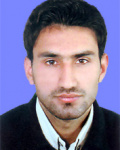| Authors | RASOL HEIDARY - aboozar vafaei - Kamran Doolatyaran |
|---|---|
| Journal | Geographical Urban Planning Research |
| Presented by | university of kashan |
| Paper Type | Original Research |
| Published At | 2022/08/29 |
| Journal Grade | Scientific - research |
| Journal Type | Typographic |
| Journal Country | Iran, Islamic Republic Of |
Abstract
Recreating ancient cultural-historical contexts will create social interactions, livability and the formation of safe spaces, and by repeating patterns and aesthetic symbolism will lead to collective remembrance, a sense of belonging, memory and strengthen the socio-civic identity of neighborhoods. Today, these ancient and symbolic heritage have worn out and withered due to urbanization. The purpose of this study is to assess the socio-cultural recreation project of public spaces with the approach of improving the environmental quality and identity of neighborhoods in the historical sidewalks of Kashan. The research method is descriptive-analytical and survey. T-test was used for final evaluation and data analysis and structural equation modeling was used to explain and model the effects. The results of one-sample t-test showed that the status of neighborhood originality, sense of belonging and aesthetics in the study area are in an unfavorable state and below the average quality level, and the evaluation of each of the indicators of social interaction, livability and security Neighborhoods showed that the indicators are in a semi-favorable state. Also, the results of the second-order factor model showed that giving importance to the regeneration index in the studied areas increased the security index by 0.98, the sense of belonging index by 0.94, the livability index by 0.74, the neighborhood originality index to The rate is 0.49, the social interaction index is 0.44 and the aesthetic index is 0.34. Therefore, today,
